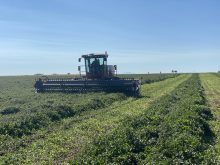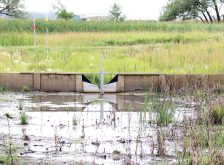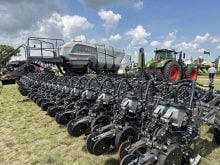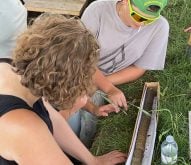Water is often the most crucial factor in controlling crop yields. The amount of water used by crops can be affected by several factors including the availability of stored soil water, amount of precipitation during the growing season, crop rooting depth and various environmental aspects such as day length, amount of solar radiation, humidity, temperature and wind.
Ideally, most dryland crops grown in Western Canada need about 250–300 millimetres (10 to 12 inches) of water to achieve reasonable yields.
The Black and Gray soil zones often receive sufficient precipitation to achieve reasonable crop yields. However, growing season precipitation in the Brown and Dark Brown soil zones is often limiting.
Read Also

Claas brings 1000 Series SP forage harvesters to Canada
In mid-August, Claas unveiled its new line of Jaguar forage harvesters at an event in Visalia, California, deep in the heart of that state’s dairy region.
The amount of stored soil moisture at planting is a crucial factor in the drier regions of the Prairies to achieve reasonable yields. It is important for farmers to be able to estimate stored soil moisture at planting to adjust crop inputs.
Why particle size matters
The amount of water a soil can retain depends on the texture of the soil. Soil texture refers to the proportion of the different sizes of mineral particles in soil. The soil particle sizes are sand, 0.05–2.0 mm in size; silt, 0.002–0.05 mm in size; and clay is less than 0.002 mm in size.
Sand particles are the largest, silt has medium-sized particles and clay particles are the smallest. The relative proportions of sand, silt and clay particles affect the pore sizes in soil, which influence the ability of soil to hold and retain water. The percentages of sand, silt and clay determine classes of soil texture (see Figure 1 below).
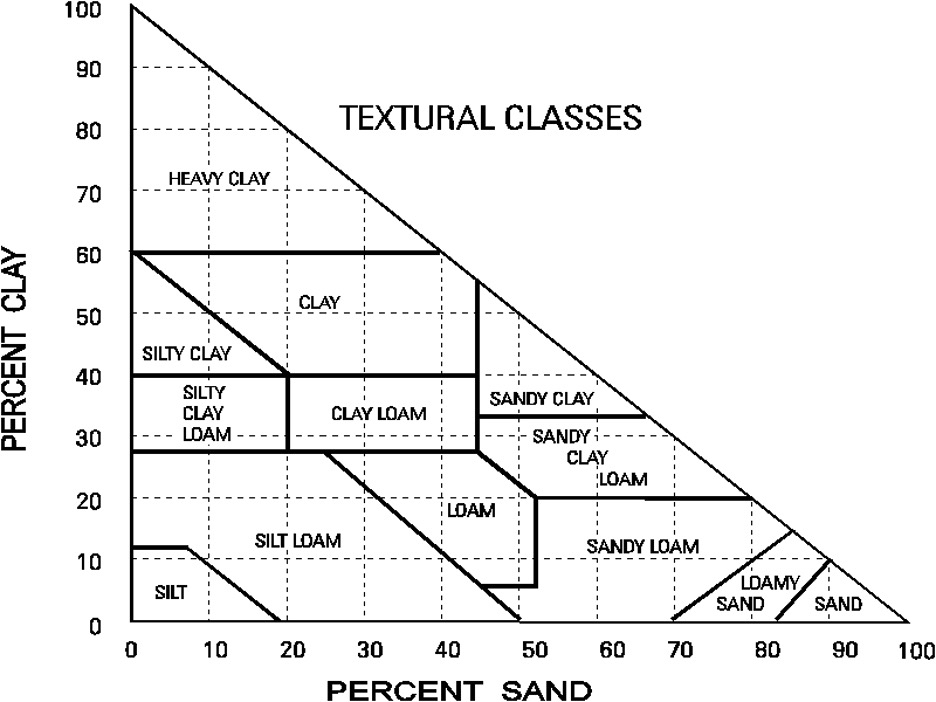
Soils with higher amounts of clay have a greater abundance of small pores and can retain more water than sandy soils, which have larger-sized pores. In sandy soils with larger pores, free water is pulled downward by gravity and will drain from the soil root zone.
Texture can be precisely determined in a soil testing laboratory using mechanical analysis or can be estimated by wetting soil and kneading it between the thumb and forefinger using the hand-feel method. A detailed explanation of how to use the hand-feel method for determining soil texture is available at nrcs.usda.gov (opens as a PDF).
Typically, soil texture can be divided into three main groups — course, medium and fine. Fine-textured soils are classified as clay, silty clay, clay loam and sandy clay. Medium-textured soils include silty loam, sandy clay loam and loam. Coarse-textured soils are sandy loam, loamy sand and sand.
A loam-textured soil is typically made up of about 40 per cent sand, 40 per cent silt and 20 per cent clay. Table 1 (below) provides the approximate amount of available soil water that can be held by various textured soils.
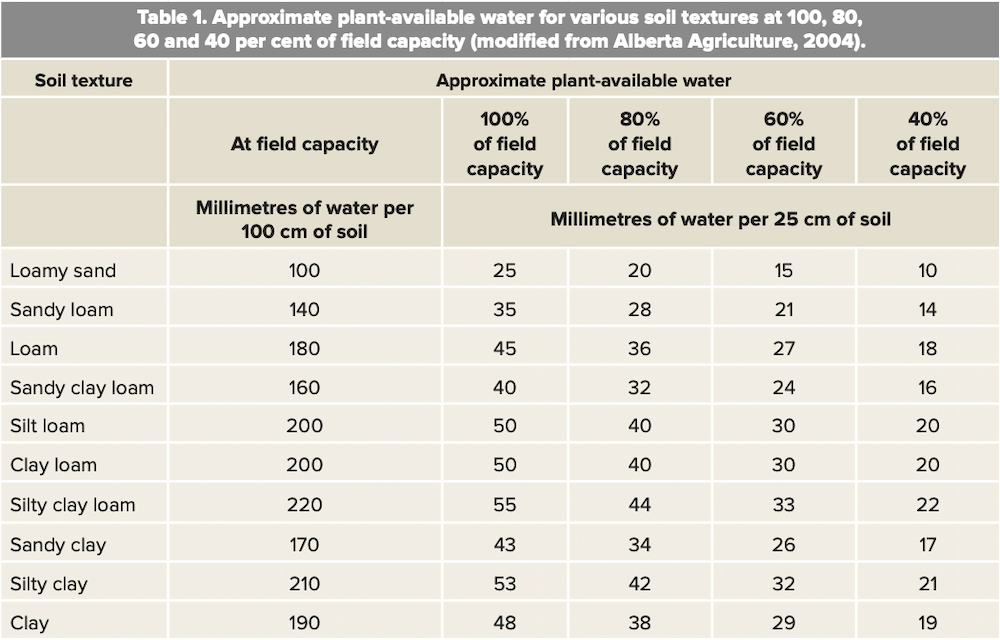
Understanding soil water
Soil is at the saturation point when all soil pores are filled with water after a saturating rain. Normally, after several days, gravity will pull free water from larger soil pores, and the free water will move downward through the soil profile and below the plant root zone.
After free water has drained away, the remaining soil water content in the root zone is referred to as field capacity.
Water that is above field capacity is referred to as gravitational water, as it is free water that is pulled downward by gravity.
The permanent wilting point occurs when plants have extracted soil water to the level that plants wilt and die.
Figure 2 (below) shows the “bucket” model of soil water, which illustrates saturation point, field capacity and permanent wilting point for typical coarse-, medium- and fine-textured soils.
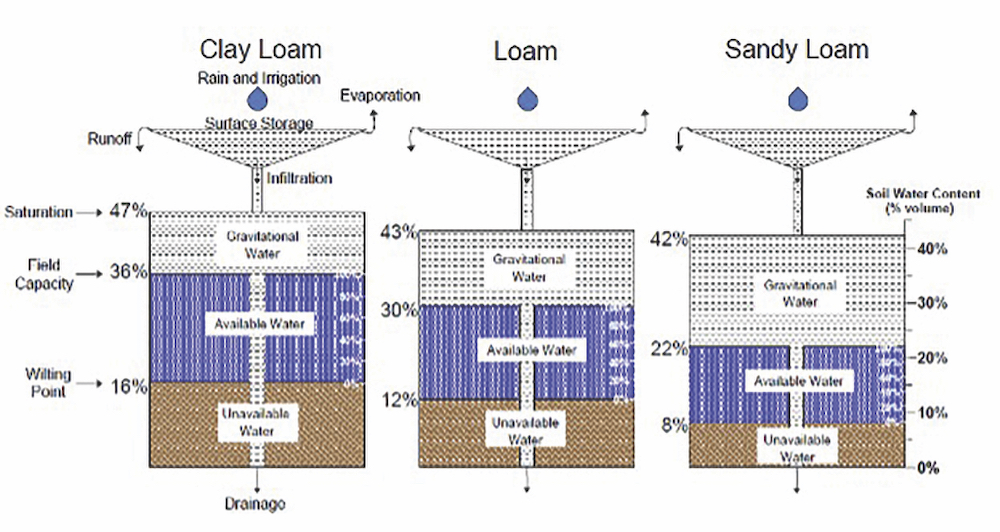
The soil water that is between field capacity and permanent wilting point is called plant-available water, which is the amount of water plants can utilize. There is still a fair amount of water remaining in the soil below the permanent wilting point, but this water is strongly held in the soil pores and is completely unavailable to plants.
For example, for a clay soil in a 100-centimetre root zone, there would be about 160 mm of unavailable water in the soil, below permanent wilting point.
About 40 per cent of the plant-available water in soil can be extracted by most crops without incurring any water-limiting stress that would affect crop yield or quality. This is referred to as readily available water.
After about 40–50 per cent of the plant-available water is used, the remaining water becomes increasingly difficult for most crops to extract and take up, which will start to affect crop growth and yield potential.
How to estimate stored soil water
Stored soil moisture and growing season precipitation are two important factors that drive crop yield. Grainews columnist Les Henry publishes an annual Prairie Stubble Soil Moisture Map showing estimated stubble soil moisture. This is a useful tool to show general soil moisture trends across agricultural regions.
In the fall before freeze-up and again in the spring after the frost is out of the ground, farmers should check their own stubble subsoil moisture to 100 cm in their fields to determine the amount of plant-available water.
In fields with variable topography, multiple sites must be checked in upper, middle and lower slope soil locations to determine the amount of stored soil moisture.
For farmers using variable-rate fertilizer technology, this additional soil moisture information is very important to estimate the optimum amount of crop inputs.
The best way to determine soil moisture is to simply use a hand auger 25 mm (one inch) in diameter. Auger down to 100 cm (40 inches), checking soil moisture every 25 cm (10 inches) using the hand-feel method. This process only takes a few minutes and is quick and easy to complete. It is easy to check multiple locations in a field with variable topography.
For example, if a clay loam soil is near field capacity from 0–25 cm and 25–50 cm, about 60 per cent of field capacity from 50–75 cm, relatively dry from 75–100 cm and the soil profile is consistently clay loam in texture, then soil moisture content can be easily estimated.
From Table 1 (above), a clay loam soil will hold about 50 mm of water per 25 cm of soil at field capacity and 30 mm of water per 25 cm of soil at 60 per cent field capacity. Therefore, 50 mm + 50 mm + 30 mm + 0 mm = 130 mm of water in the 0 cm to 100 cm soil profile.
Knowing the approximate amount of stored soil moisture at the time of planting allows farmers to modify the level of fertilizer inputs, depending on stored soil water above or below typical spring moisture conditions.
How to measure soil moisture
The ability to measure soil moisture rapidly and accurately is helpful to farmers. For most farmers, the simplest, easiest and cheapest way is using the hand-feel method.
This procedure uses a Dutch soil auger or soil probe to take soil samples from specific depths in the field to estimate soil water content. Different soil textures have a unique feel with specific characteristics relative to the soil water content.
With experience, a farmer can reasonably estimate soil moisture content. The USDA has excellent information on using the hand-feel method to estimate soil moisture, which you can find at wcc.nrcs.usda.gov (opens as a PDF).
Soil moisture sensors can also be installed in the field to provide moisture content on a real-time basis. However, sensors can be costly to purchase, reliability is an issue with some, most need to be calibrated to field conditions and some are not user friendly.
Fields with variable topography or texture may need multiple sensor locations to develop a picture of soil moisture variability across a field. Sensors can be electronically linked to advise a grower of soil moisture conditions without having to be in the field.
Significant developments and improvements have been made with soil sensors, however, most need to be calibrated to provide accurate soil moisture readings.
My old school preference is to use a Dutch auger and the hand-feel method to estimate stored soil moisture quickly and fairly accurately in multiple locations.
In my next I columns, I will focus on soil moisture to schedule and manage irrigation.





